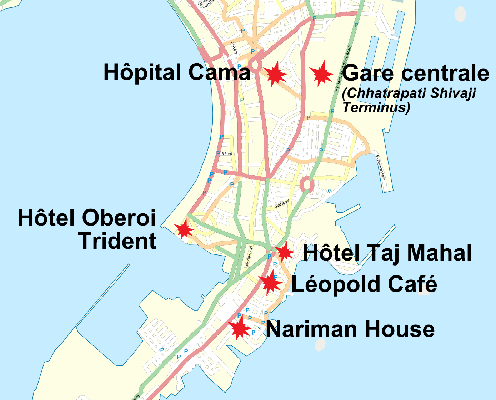India has significantly scaled up its coastal security following the 2008 Mumbai terror attacks. More than 166 Indian and foreign citizens were killed, and 300 injured in the November 26 attack, after militants trained on the Pakistani soil hijacked a Gujarat-based fishing vessel and made their way to Mumbai.
Since then, a series of initiatives have been taken, including the constitution of the National Committee for Coastal and Maritime Security (NCSMCS) in 2009, Steering Committee for Review of Coastal Security (SCRCS) in 2013, and the State and District level Coastal Security Committees in 2016.
According to a top government official, “Though the much-awaited single-point apex level body, the proposed National Maritime Authority (NMA) is yet to be realized, an ‘inter-agency set-up’ spearheaded by the Indian Navy, has steered the course over the past 12 years.”
Besides, Joint Operations Centres (JOC) have been set up at coastal cities of Mumbai, Kochi, Visakhapatnam, and Port Blair in order to increase synergy between them.
Each JOCs fall under the operational control of one Commander-in-Chief for greater synergy of the coastal security efforts of over 15 central and coastal state government agencies.
According to an official, coastal states are also empowering the Marine Police with efforts being made to train the personnel.
“The National Academy of Coastal Policing, which is being developed near Okha in Gujarat, will be a unique institution to train marine police in maritime laws, seamanship, boat-work, navigation, weapon-handling, usage of navigation and surveillance instruments, etc,” said the official.
18 Indian security personnel were among the hundreds killed when the terrorists breached the defenses of the nation, in a siege which lasted for nearly 60-hours.

The militants stormed inside prominent places like the Chhatrapati Shivaji Maharaj Terminus, the Taj Mahal Hotel, the Oberoi Trident, Leopold Cafe, Cama Hospital, and the Nariman House Jewish Community Center (Nariman Light House).
While India lost some of its top-most officials in the counter-terrorism operations, nine of the 10 terrorists were killed by the security forces. The last of the remaining, Ajmal Kasab, was caught before being hung four years later.
Earlier, former Mumbai Police Commissioner and retired IPS officer Rakesh Maria, who investigated the terror attacks, disclosed how LeT planned to portray the 26/11 attack as an act of ‘Hindu terrorism’.
Maria in his book, Let Me Say It, describes how the 10 militants were given a new identity in order to disguise themselves as Indian Hindus.
“Soon their hair was cut and beards shaved off, new clothes and shoes were purchased for them and they were given watches set to Indian time. The labels on their clothes were removed to prevent identification,” he wrote.
“New photographs were clicked to make fake identity cards to pass them off as Indian Hindus. To complete Hindu impersonation, they were instructed not to forget tying the red sacred thread around their wrists,
“If all had gone well he [Ajmal Kasab] would have been dead with a red string tied around his wrist like a Hindu. We would have found an identity card on this person with the fictitious name Samir Dinesh Choudhari, student of Arunoday Degree and P.G College.”
Maria also gave details regarding telephonic conversations under which the militants were instructed by their handlers to tell interviewers that they belonged to an organization associated with “Deccan Mujahideen” if asked.
Despite all intelligence pointing Pakistan’s hand in the attacks, Islamabad refused to accept Kasab as their citizen, however, a London-based newspaper debunked those beliefs soon enough.
A team from The Observer tracked down Kasab’s home to a Pakistani village called Faridkot, however, they were unable to get in touch with his family.
According to a neighbor who described himself as Kasab’s relative, said that they had gone to a wedding. However, he later admitted that “he (Kasab’s father) and his wife, Noor, had been mysteriously spirited away earlier in the week”.
According to the Observer, the villagers recognized Kasab in pictures shown to them. “We’ve all known from the first day [of the news of the terrorist attack] that it was him, Ajmal Amir Kasab,”
“His mother started crying when she saw his picture on the television,” said a villager.
Four years after the planned attacks, Kasab was finally hanged on November 21 at Yerwada Jail in Pune.




